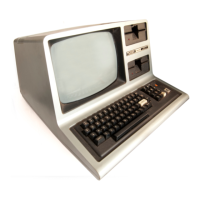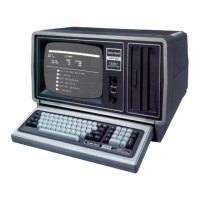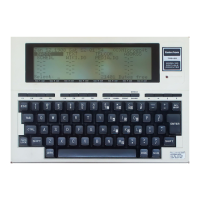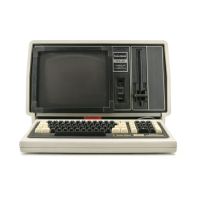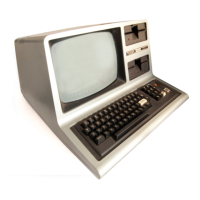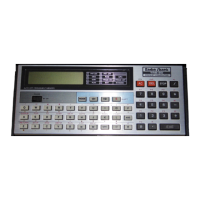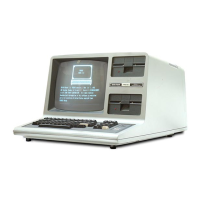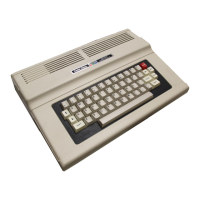87
RS-232C CIRCUIT BOARD
9.1 RS-232C Technical Description
The RS-232C option board for the Model 4 computer
supports asynchronous serial transmissions and
conforms to the EIA RS-232C standards at the input -
output interface (P1). The heart of the board is the
TR1602 Asynchronous Receiver/Transmitter. It
performs the job of converting the parallel byte date
from the CPU to a serial data stream including start,
stop, and parity bits. For a more detailed description
of how this LSI circuit performs these functions, refer
to the TR1602 data sheets and application notes.
The transmit and receive clock rates that the TR1602
needs are supplied by the Baud rate generator
(BR19411). This circuit takes the 5.0688 MHz
supplied by the CPU board and the programmed
information received from the CPU over the data bus
and divides the basic clock rate to provide two clocks.
The rates available from the BRG go from 50 Baud to
19200 Baud. See the BRG table for the complete list.
BRG PROGRAMMING TABLE
NIBBLE LOADED
TRANSMIT OR RECEIVE
BAUD RATE 16X CLOCK FREQUENCY
SUPPORTED BY
SETCOM
0H 50 0.8kHz yes
1H 75 1.2 kHz yes
2H 110 1.76kHz yes
3H 134.5 2.1523kHz yes
4H 150 2.4kHz yes
5H 300 4.8kHz yes
6H 600 9.6 kHz yes
7H 1200 19.2 kHz yes
8H 1800 28.8kHz yes
9H 2000 32.081 kHz yes
AH 2400 38.4 kHz yes
BH 3600 57.6kHz yes
CH 4800 76.8 kHz yes
DH 7200 115.2kHz yes
EH 9600 153.6kHz yes
FH 19,200 307.2kHz yes
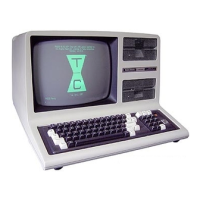
